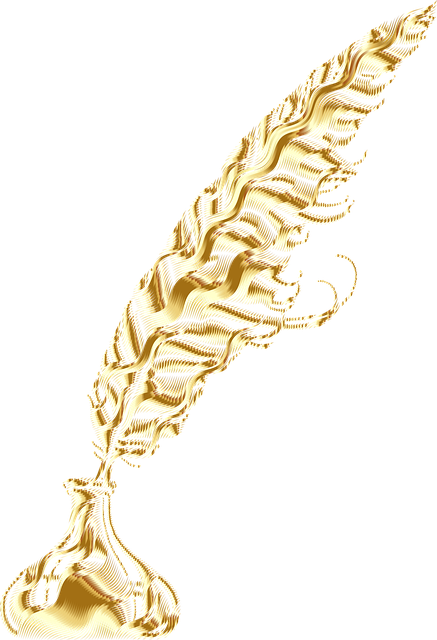To convert a traditional Roth IRA to one that includes investments in precious metals like gold, silver, platinum, and palladium, set up a self-directed Roth IRA and choose a custodian skilled in handling physical commodities. Fund the account via a tax-free rollover from an existing Roth IRA or another eligible retirement plan. Invest only in IRS-approved precious metals, ensuring they meet purity standards. Work with reputable dealers and custodians to manage purchases, storage, and compliance with IRS rules. These metals must be kept in a qualified depository or with an authorized coin dealer or refiner. The custodian is responsible for conducting appraisals and reporting the value of the gold, which is crucial for maintaining tax benefits and regulatory compliance. When selecting gold investments, consider your investment goals and risk tolerance from a variety of IRS-approved options like American Gold Eagles, bars, and other coins. Regularly review your portfolio to ensure it aligns with your retirement savings strategy and remains diversified within this asset class. Fund the account through a direct rollover to maintain tax advantages, and always adhere to IRS guidelines for storage and investment choices to preserve the Roth IRA's benefits.
Exploring the transformation of a Roth IRA into a precious metals portfolio, particularly one centered on gold, offers investors a unique avenue for diversification beyond the stock and bond market staples. This article guides you through the essential steps to set up a self-directed Roth IRA conducive to investing in physical gold and other precious metals. We will navigate the rules and regulations that govern such conversions, ensuring compliance while highlighting the strategic advantages of this approach. From selecting a reputable trustee and custodian to identifying the most suitable gold types for your Roth IRA, this comprehensive guide provides clarity and actionable insights to facilitate a smooth transition into the world of precious metals as part of your retirement strategy.
- Setting Up a Self-Directed Roth IRA for Precious Metals Investment
- Understanding the Rules Governing Roth IRA Conversions to Gold
- Selecting a Trustee and Custodian for Your Gold-Backed Roth IRA
- Choosing the Right Type of Gold for Your Roth IRA Portfolio
- Executing the Roth IRA to Gold Conversion Process
Setting Up a Self-Directed Roth IRA for Precious Metals Investment

To initiate the process of converting your Roth IRA to gold or other precious metals, the first and most critical step is to set up a self-directed Roth IRA that permits such investments. Traditional Roth IRAs typically limit your investment options to stocks, bonds, and mutual funds; however, a self-directed Roth IRA opens a broader scope of opportunities. This type of account is managed by the IRA holder or a designated custodian who understands the unique requirements for holding physical commodities like gold, silver, platinum, and palladium.
Once you have established a self-directed Roth IRA with a custodian that allows for precious metals, the next phase involves funding the account. This can be done by rolling over funds from an existing Roth IRA or another eligible retirement plan. The funds are transferred directly to your new self-directed IRA, maintaining the tax-advantaged status of your investment. After the transfer is complete and the funds are available in your new account, you may begin purchasing approved precious metals. It’s crucial to work with a reputable dealer who is also an IRS-approved custodian to ensure compliance with IRS rules regarding purity and storage for these investments. The dealer will facilitate the purchase, arrange for the metals to be delivered to an IRS-approved depository, and keep accurate records for your IRA. This setup ensures that your investment in gold or other precious metals is held according to IRS regulations, preserving the tax benefits of your Roth IRA.
Understanding the Rules Governing Roth IRA Conversions to Gold

When considering the conversion of a Roth IRA to gold, it’s imperative to familiarize oneself with the rules and regulations that govern such transactions. The Internal Revenue Service (IRS) sets forth specific guidelines that must be adhered to avoid penalties or taxable events. A Roth IRA holder looking to invest in gold must convert their traditional IRA to a Roth IRA first, which typically involves paying taxes on the converted amount if it’s not a rollover. Once the Roth IRA is established and ready for alternative investments, the account holder can allocate funds to purchase IRS-approved physical gold, silver, platinum, and palladium. These metals must meet certain fineness requirements to be eligible for IRA investment.
The process of purchasing gold for a Roth IRA should be conducted through a trustee or custodian that specializes in self-directed IRAs and is approved by the IRS. This custodian will hold the gold on behalf of the account holder, ensuring that it remains within the IRS framework for IRA investments. The holder cannot take possession of the gold directly; it must remain in a depository or with a refiner or coin dealer eligible to work with IRA assets. Regularly, the custodian will provide an appraisal to assess the value of the gold, which is crucial for reporting purposes and maintaining compliance with IRS rules. Understanding these rules is essential for seamless investment management and ensuring that the Roth IRA retains its tax-advantaged status while allowing for diversification into precious metals.
Selecting a Trustee and Custodian for Your Gold-Backed Roth IRA

When considering the conversion of a Roth IRA to a gold-backed investment, selecting a trustee and custodian who specialize in precious metals is pivotal. The trustee oversees the administration of your Roth IRA, ensuring compliance with IRS regulations, while the custodian holds and safeguards your physical gold assets. It’s imperative to choose entities with a proven track record in this niche to navigate the unique aspects of holding gold within an IRA framework. These professionals must adhere to strict standards set by both the IRS and the Department of Labor, ensuring that your investment is protected and managed according to established guidelines for retirement accounts.
A reputable trustee and custodian will provide you with a comprehensive list of IRS-approved gold products eligible for inclusion in your Roth IRA. These typically include American Gold Eagles, American Silver Eagles, gold buffalo coins, and gold bars meeting specific purity requirements. Your chosen custodian will also guide you through the process of purchasing the approved gold and transferring it into their custody. It’s crucial to work with a trustee and custodian who communicate clearly and maintain transparency throughout the process, as this will enable you to make informed decisions regarding your investment in physical gold within your Roth IRA.
Choosing the Right Type of Gold for Your Roth IRA Portfolio

When considering the addition of gold to your Roth IRA portfolio, it’s crucial to select the type of gold that aligns with your investment objectives and risk tolerance. Within a self-directed Roth IRA that permits precious metals, you have options for physical gold forms, including coins, bars, and Eagles. Coins like the American Gold Eagle or Krugerrand are popular choices due to their recognized purity and historical significance. For investors prioritizing purity, gold bullion bars offer a high degree of gold content with less premium over spot price compared to coins.
The purity of gold in your Roth IRA must meet the standards set by the Internal Revenue Service (IRS). Generally, the gold should be 99.5% pure for coins and 99.9% pure for bars to be eligible for tax-advantaged Roth IRA accounts. Additionally, the precious metals must be held with an IRS-approved custodian. This ensures compliance with the rules governing retirement accounts. It’s also wise to diversify your holdings within this category, as gold prices can be influenced by various factors including economic stability, inflation rates, and currency fluctuations. By carefully choosing the type of gold that fits your investment strategy and regularly reviewing your portfolio, you can effectively integrate gold into your Roth IRA to potentially enhance your retirement savings’ resilience and growth.
Executing the Roth IRA to Gold Conversion Process

Once you have set up a self-directed Roth IRA that allows for investments in physical gold and other precious metals, the next step is to fund this account. You can transfer or rollover funds from an existing Roth IRA or another eligible retirement account without triggering taxes or early withdrawal penalties. The process begins with contacting your current IRA custodian to initiate a direct rollover to the new self-directed IRA custodian that facilitates gold investments. This transfer ensures that the funds move directly from one custodian to another and not through your hands, adhering to IRS regulations.
With the funds in place, you can then proceed with the acquisition of gold. The Internal Revenue Service (IRS) stipulates which types of precious metals are permissible within a self-directed IRA for tax-advantaged growth. These typically include gold, silver, platinum, and palladium in the form of bullion or coins that meet certain fineness criteria. Your custodian will provide a list of approved investments or can facilitate the purchase directly from approved dealers. You must select your gold investments carefully, ensuring they are held by the custodian at an approved depository to maintain the tax-advantaged status of your Roth IRA. The conversion process is designed to be user-friendly and accessible for those interested in diversifying their retirement portfolio with precious metals.
In conclusion, transitioning a Roth IRA into an investment in gold is a process that, when executed correctly, can offer investors a unique and potentially advantageous addition to their retirement portfolio. By establishing a self-directed Roth IRA with a custodian that permits precious metals, you gain access to a tangible asset class that can serve as a hedge against inflation and market volatility. It’s crucial to thoroughly understand the rules and regulations governing such conversions, select a reputable trustee and custodian, and carefully choose the type of gold that aligns with your investment goals and risk tolerance. With careful planning and adherence to IRS guidelines, investing in gold through a Roth IRA can be a strategic move for diversification and long-term wealth preservation.
